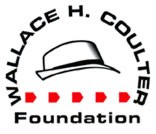Biomedical Innovation at the University of Southern California

 Here at USC, technology innovation and inter-departmental collaboration is a big priority. Recently, the Coulter foundation granted $5M to USC’s Viterbi School of Engineering, Keck School of Medicine, and Stevens Institute for Innovation as part of their Coulter Translational Research Partnership Program. As far as I can tell, a large chunk of this money is going to go towards developing devices aimed at problems in pediatric medicine. Of worthy note is the fetal pacemaker being developed by USC’s Medical Device Development Facility, which has potential to assuage symptoms related to several structural defects while still in utero.
Here at USC, technology innovation and inter-departmental collaboration is a big priority. Recently, the Coulter foundation granted $5M to USC’s Viterbi School of Engineering, Keck School of Medicine, and Stevens Institute for Innovation as part of their Coulter Translational Research Partnership Program. As far as I can tell, a large chunk of this money is going to go towards developing devices aimed at problems in pediatric medicine. Of worthy note is the fetal pacemaker being developed by USC’s Medical Device Development Facility, which has potential to assuage symptoms related to several structural defects while still in utero.
Perhaps influenced by these recent developments, there is a palpable call to action in the air around Viterbi and Keck. I recently met with a group of bright, young undergraduate BME’s working on a much improved chest drain device, of which they plan on submitting to the BMEStart competition and E-team grants. Students within Viterbi and Keck’s nascent Health, Technology, and Engineering program are working hard to seek out real-world problems and design solutions with the market in mind. The NCIIA is sure to see a lot of action from that group over the next few years.
There is a lot of new collaboration happening between Viterbi and Keck, and many of these new relationships will result in impactful technology. The NCIIA can count on many of these new technologies appearing in their competitions.


